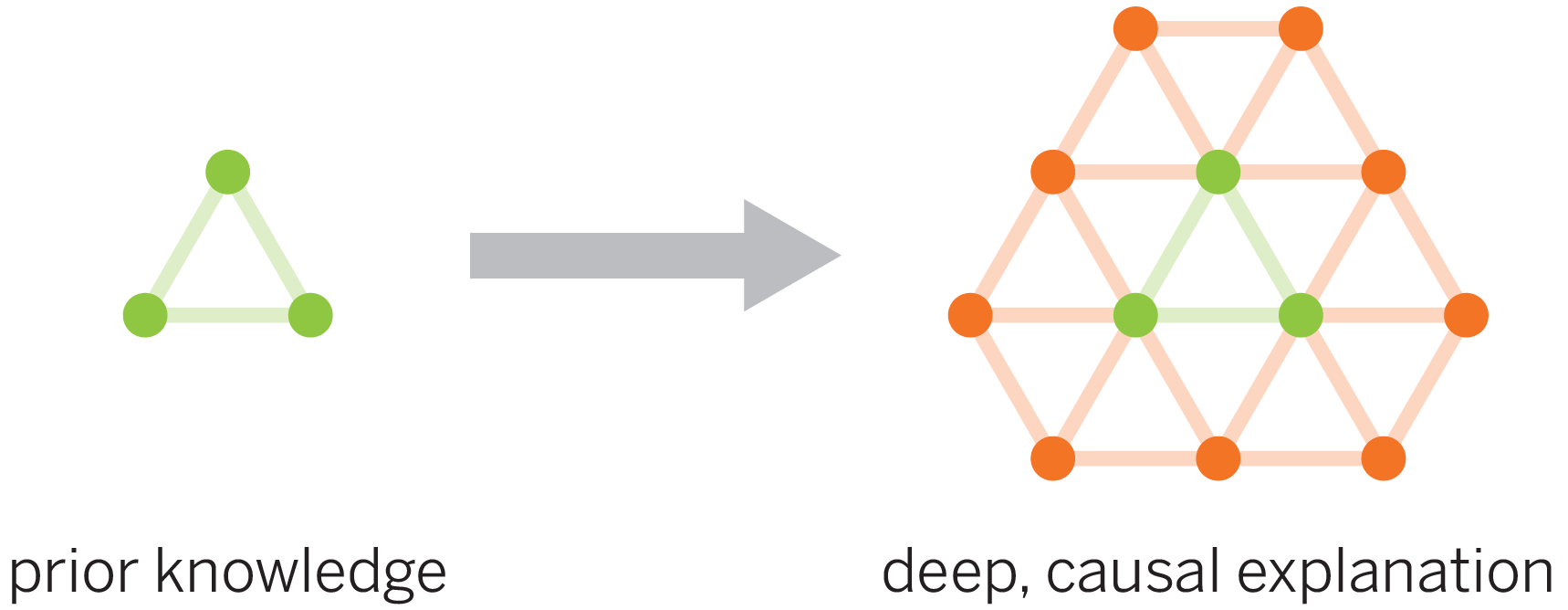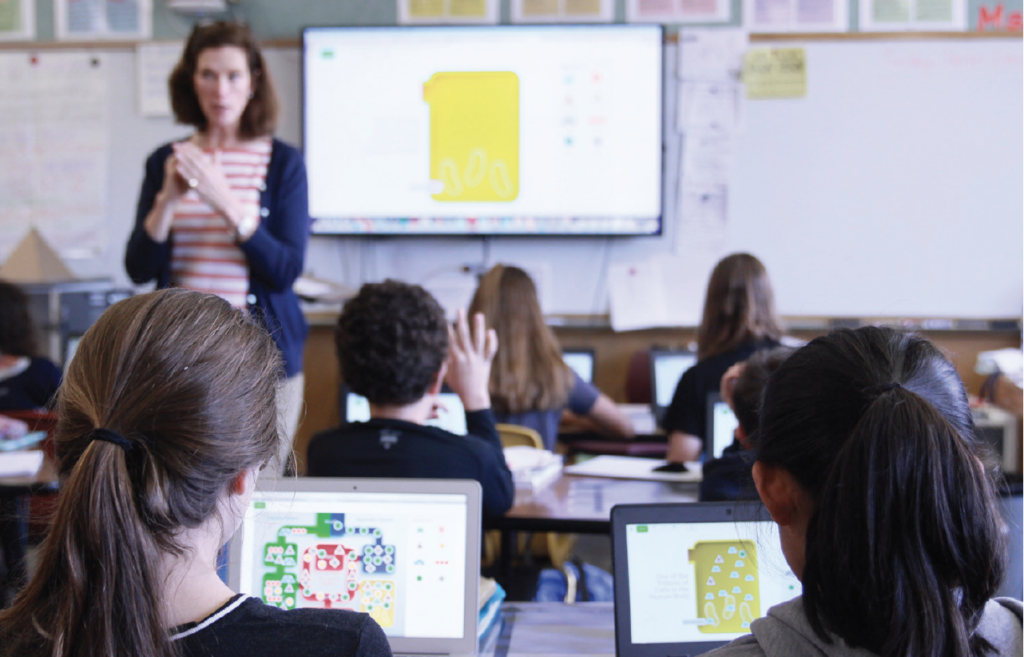Our approach
The Amplify Science approach adheres to the letter and spirit of the NGSS. Students build knowledge across disciplines in each year so that past learning is connected to new concepts, applied to new phenomena, and further developed in each successive year. The Framework-focused design of the Amplify Science curriculum is grounded in the following:
- Designed from the ground up for NGSS
- Emphasis on unit coherence
- Real-world problems and scientific phenomena
- Multimodal approach
- Explicit support for literacy development
- Expanding opportunities for visualizing
1. Designed from the ground up for NGSS
The Amplify Science curriculum developers at University of California, Berkeley’s Lawrence Hall of Science crafted each unit, chapter, and lesson with the following questions in mind:
- What do we want students to figure out? (What disciplinary core idea (DCI) or part of a DCI?),
- How do we want them to figure it out? (What scientific and engineering practice will they engage in to figure it out?)
- What crosscutting concept can scaffold students’ understanding and connect it to other ideas about the natural world that they have learned?
This resulted in a curriculum that incorporates a strategic, well-balanced integration of the three dimensions.
2. Emphasis on unit coherence

Student learning experiences and assessments are grounded in a unit-specific learning progression called a Progress Build. A Progress Build clearly defines each level of students’ increasingly sophisticated understanding of unit phenomena students should reach as they progress through the unit. Students build that understanding through engagement with science and engineering practices and application of crosscutting concepts over the course of the lessons in the unit. Thus, as students investigate the anchor phenomena for each unit, they construct new knowledge the way scientists do: through engagement with a core set of professional practices and the application of prior knowledge. Students are consequently thoroughly prepared to meet the three-dimensional learning goals articulated in the NGSS performance expectations.
- In the middle school Traits and Reproduction unit, students take on the role of student geneticists in order to investigate possible ways spider silk can be used for medical purposes, such as for artificial tendons. Through their investigation, they figure out what causes variation in spider silk traits. Specifically, they explore why parent spiders have offspring with widely varied silk flexibility traits. They uncover the roles of proteins and genes and the way that genes are inherited.
- In the middle school Phase Change unit, students take on the role of student chemists in order to investigate the mystery of a disappearing methane lake on Saturn’s moon, Titan. Through their investigation, they discover what causes phase changes, including the role of energy transfer and attraction between molecules.
5. Explicit support for literacy development
To engage in science, students need to read, write, and talk like scientists. In Amplify Science, students are not expected to come to science class knowing how to read or write science text, or to engage in science discourse. Instead, Amplify Science provides explicit instruction for students and employs the Gradual Release of Responsibility model to enable students to become independent readers and writers. Through the seamless integration of science and literacy instruction, students learn that reading, writing, and talking are essential practices of science, and that scientists use these practices to gather information, communicate claims, leverage evidence, draw conclusions from data, and share their ideas through oral and written explanations and arguments.
6. Expanding opportunities for visualizing

Through the thoughtful integration of cutting-edge technology, students of Amplify Science are empowered to visualize otherwise invisible scientific phenomena in new and exciting ways. From visualizing how concentrations of certain molecules in the atmosphere can affect global average temperature in the Earth’s Changing Climate Simulation, to observing how a population of animals adapts over dozens of generations to a selective pressure in the Natural Selection Simulation, students have the ability to use technology in ways that real scientists and engineering would.